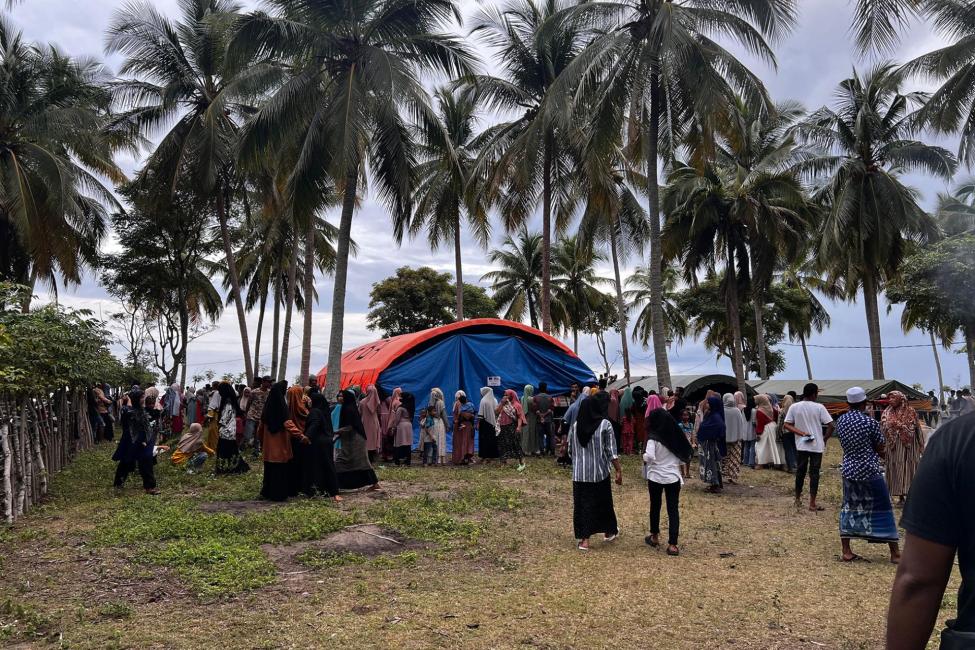-
Who we are
WHO WE AREThe International Organization for Migration (IOM) is part of the United Nations System as the leading inter-governmental organization promoting since 1951 humane and orderly migration for the benefit of all, with 175 member states and a presence in over 100 countries. IOM joined the United Nations system in September 2016.
About
About
IOM Global
IOM Global
-
Our Work
Our WorkAs the leading inter-governmental organization promoting humane and orderly migration, IOM plays a key role to support the achievement of the 2030 Agenda through different areas of intervention that connect both humanitarian assistance and sustainable development.
Cross-cutting (Global)
Cross-cutting (Global)
- Data and Resources
- Take Action
- 2030 Agenda
Migrant Workers Face Heightened Risk of Death and Injury: New IOM Report
Berlin – Migrants who often fill more dangerous jobs frequently face higher risk of injury and death than other workers and more data on the circumstances of deaths is critical for policies that ensure their safety, according to a new report from the International Organization for Migration's (IOM) Missing Migrants Project.
The "Occupational Fatalities among International Migrant Workers" report compiled by the Global Migration Data Analysis Centre (GMDAC) highlights that migrant workers are overrepresented in hazardous jobs in industries such as construction, manufacturing, mining and agriculture compared to non-migrants. They are also more likely to have jobs in the informal economy, where risks are even greater. A lack of data is limiting any action to measure and address these risks, the report says.
Living and working conditions of migrants heighten the chance of exposure to COVID-19, the report shows. Migrants are overrepresented in front-line, critical infrastructure and other essential jobs that cannot be performed remotely. In the United States, for example, 69 per cent of all migrants in the labour force and 74 per cent of undocumented migrant workers are essential workers.
“The COVID-19 pandemic has revealed migrant workers as both essential and marginalized,” said Frank Laczko, Director of IOM GMDAC. “But while their work has been deemed vital, they are often invisible in the data and thus excluded from protection at work.”
An estimated 164 million migrant workers make up almost 5 per cent of the global workforce and play a key economic role in both sending and receiving countries. They fill critical roles in destination countries, such as in health care and manufacturing, and remittances sent home by migrant workers bolster some national economies with as much as 40 per cent of their GDP.
While labour migration spurs socio-economic development, it can come with significant personal cost. The number of fatal occupational injuries was higher among migrants than native-born workers in 73 per cent of the countries where data were available, according to the International Labour Organization (ILO). The finding is especially alarming considering the barriers for migrants who attempt to report incidents.
Each year, tens of thousands of people die overseas while working, too frequently from preventable causes. Grieving families may suffer devastating financial repercussions while struggling to find out what happened. Often, they must wade through complex bureaucracies to repatriate the remains of loved ones.
The IOM report shows that improved data on the incidence, causes and circumstances of the deaths of migrant workers is essential for effective policy interventions, and can inform political action among host and home countries.
“Better data are urgently needed to ensure the rights of migrants are upheld as they work in key sectors,” Laczko said. “We cannot adequately protect those at risk – including the families left behind – without the evidence needed for effective policies.”
States have committed to promote fair and safe working conditions for all through the 2030 Agenda for Sustainable Development and the Global Compact for Safe, Orderly and Regular Migration but much of the work to ensure safe migration has so far focused largely on deaths and disappearances during migration.
The report emphasizes the need for better data on other measures of migrant safety, including the occupational safety and health of migrant workers across the world.
Read the full report, Occupational Fatalities among International Migrant Workers, here.
***
For information, please contact:
Julia Black, Project Officer, IOM Global Migration Data Analysis Centre, Email: jblack@iom.int, Tel: +49 15903447446

